Comprehensive Guide to IoT Remote Device Management
Modern Internet of Things (IoT) systems can be complex entities comprised of thousands of physically dispersed end-points. Smart cities, industrial automation, and vehicle fleet management are just a few examples of IoT systems in action. Very often, multiple device types are used in complex IoT systems which can involve coordinating data transmission via different communication protocols.
Utilizing the system effectively to meet business objectives requires an IoT device management solution.
In this article, we are going to take a close look at IoT device management platforms to see how they can help a business reach its full potential.
What is IoT Device Management?
IoT device management is the process of accessing IoT devices so their functionality can be monitored and managed remotely.
It is essential to effectively manage the potentially millions of devices that make up an IoT system. The very basis of IoT systems is to have many independent devices working together to reach a common goal.
Without an adequate IoT remote management solution, organizations cannot optimize their use of IoT devices nor understand the system’s operational status. Remote management of IoT devices enables issues with specific pieces of equipment to be diagnosed and addressed before they negatively impact the whole system.
The ability to communicate with the sensors and devices in an IoT environment is necessary for many reasons that all contribute to the efficiency of the underlying IoT system.
What are the Purposes of IoT Device Management?
IoT device management is involved in multiple aspects of creating and maintaining an IoT network or system. Following are the main reasons organizations need to remotely manage IoT devices.
Provisioning and Onboarding
New IoT devices that are added to an existing network or system need to be provisioned and onboarded.
During this process, a new device is connected to the system and the capacity to communicate over the Internet is established. Activities performed during this phase of IoT device management include verifying I/O connections, configuring network settings, and initial software and firmware setup.
Authentication
Devices need to be authenticated when they are first introduced into the system.
Authentication also needs to be performed when users log into devices to keep IoT equipment from being compromised by unauthorized actors. A robust IoT device management software solution incorporates security and the ability to authenticate access to the connected devices.
Configuration
Initial or default configuration settings may just be enough to get IoT devices connected to the system and establish basic communication.
Further configuration is often required to get the devices operating effectively. A remote IoT management system enables devices spread across the globe to be configured from a centralized location.
Monitoring and Maintenance
IoT devices are often deployed in mission-critical situations that require remote monitoring and maintenance.
Sensors failing on automated assembly lines or intelligent traffic networks need to be identified immediately so action can be taken to preserve the systems’ safety and functionality. Monitoring can also alert an organization to unauthorized attempts to access the IoT network. Maintenance activities such as updating firmware or software to address security shortcomings can be accomplished with IoT remote management software.
Diagnostics and Generating Status Alerts
Running diagnostics on IoT devices allows companies to perform predictive maintenance and minimize downtime caused by failed system components.
Through the use of an IoT remote management solution, organizations can identify devices that may be malfunctioning and replace them before they bring down the system. Alerts can be configured and generated to indicate a wide range of issues based on the specific needs of an organization or IoT system.
Control
The ability to easily control devices remotely is one of the most valuable features of IoT device software.
Remote management of IoT devices requires the ability to quickly assume control of individual devices to address emergencies or promptly perform critical tasks. In some cases, automated processes may need to be overridden to facilitate short-term changes to an IoT system. Remote access & control of IoT devices is also necessary when devices need to be rebooted or tested to ensure optimal performance.
Challenges of Managing IoT Devices Remotely
Multiple challenges exist that can make it difficult to efficiently manage IoT devices remotely. Using the right IoT remote management software can help minimize these potential problems. Following are some of the challenges associated with remote management for IoT environments.
- • Security – The most important challenge in managing IoT devices remotely is ensuring the security of the underlying environment. Each device, sensor, or endpoint presents hackers with a new platform from which to launch attacks against the system. Compromising a single device can have catastrophic consequences for a business or public safety.
- • Privacy – A challenge related to security is protecting the privacy of data transmitted in IoT environments. In addition to robust authentication, information should be encrypted to safeguard it in the eventuality of a data breach. Companies that choose not to implement encryption in an attempt to gain performance are taking a big risk with their valuable data.
- • Network performance and dependability – IoT systems are only as good as their networks. Without communication between devices and the data centers processing their information, the IoT environment is essentially useless. Resilient networks need to be provisioned from reliable providers when designing an IoT system.
IoT Device Management Platforms & Their Benefits
Now, let’s look at IoT device management platforms and investigate the benefits they bring to IoT environments.
What are IoT Device Management Platforms?
An IoT device management platform is a solution that enables an organization to perform the functions required to operate an IoT environment efficiently. The functions include remote provisioning, configuration, authentication, control, and monitoring of IoT devices.
Automation and security are two features of IoT device management platforms that are especially attractive to organizations. Through automation, a large IoT environment can be managed by a limited number of human resources while maintaining high availability and performance. A platform can also provide enhanced security that protects individual devices as well as limits breaches from affecting the whole environment.
A viable IoT management platform can help companies implement a unified environment comprised of different types of devices from multiple vendors. It can also minimize the amount of coding that needs to be performed to tailor the system to meet business objectives.
Major Players in IoT Device Management Software
Following are some of the major IoT device management software vendors and their current offerings.
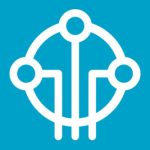
AWS IoT Device Management – AWS IoT Device Management simplifies the tasks necessary to provision, organize, monitor, and manage IoT devices at scale. This product is compatible with all device types and operating systems, allowing an organization to manage a complete IoT environment with the same tool.
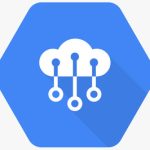
Cloud IoT Core – This fully managed service enables customers to easily and securely connect, manage, and ingest data from any number of physically dispersed IoT devices. In concert with other Google Cloud offerings, IoT Core provides a complete solution for supporting IoT environments.
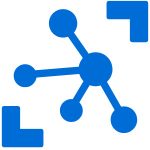
Azure IoT Hub – Microsoft’s IoT device management solution provides secure and reliable communication between IoT applications and devices. Features include per-device authentication, scaled provisioning, and built-in device management in a cloud-hosted solution that can connect to any kind of device.
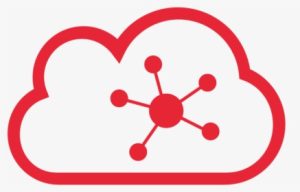
Oracle IoT Cloud Service – This service from Oracle simplifies IoT management and minimizes the risks associated with creating innovative IoT applications. Oracle IoT Cloud Service makes it easy to integrate IoT initiatives with a company’s existing IT strategy.
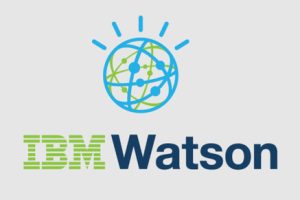
IBM Watson IoT Platform – IBM’s IoT management offering provides customers with a powerful web dashboard from which to manage their IoT environment. The service makes it easy to monitor, control, manage, and scale an IoT system to meet any organization’s business requirements.
IoT Device Management Platform Advantages
Selecting a reliable IoT device management platform provides organizations with multiple benefits. Following are some of the most impactful advantages of deploying a viable IoT management platform.
- • Efficient onboarding and provisioning – Automated onboarding and provisioning streamline the process of adding new devices to the environment. In large and dynamic IoT systems, this can save substantial time and resources.
- • Enhanced integration – Integrating devices from multiple manufacturers and vendors can complicate IoT management. The integration capabilities of a dedicated IoT device management platform eliminate this problem.
- • Reduced security risks – Manually configuring security settings for IoT devices opens the door to human error which puts enterprise data resources at risk. A management platform reduces security risks with automated processes to enforce security standards.
- • Simplified scalability – IoT environments often need to grow rapidly to address changing business models or objectives. Manual processes will not allow an IoT system to scale as quickly as a robust device management platform.
- • Accelerated time-to-market – Companies typically implement IoT environments to address specific business objectives or opportunities. An IoT management platform enables faster implementation so businesses can capitalize on market conditions.
Conclusion
Managing IoT devices is an essential component of using IoT environments effectively. Each device plays an important role in the overall system and needs to be easily accessed, controlled, monitored, and configured. Attempting to handle the demands of a large and complex IoT system strictly with manual processes is a recipe for disaster.
Companies benefit from introducing an IoT remote management solution when implementing a new IoT environment or upgrading and streamlining an existing system. The automation and enhanced security features of reliable platforms let an organization achieve the best performance and productivity from its IoT devices and systems.
The wide availability of remote IoT management platforms from major cloud vendors enables any company to add this type of valuable software tool and reap its advantages.